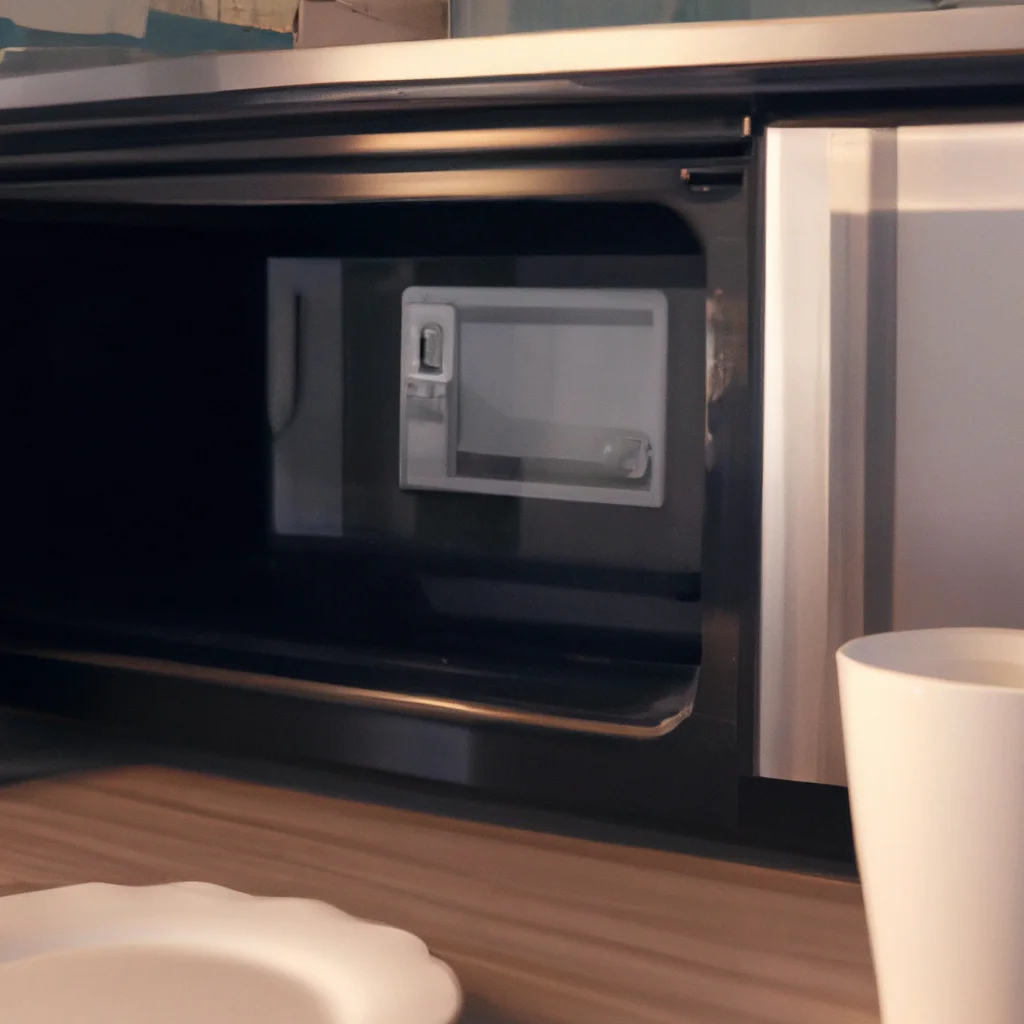How does a microwave oven heat and cook food?


How does a microwave oven heat and cook food?
Microwave ovens are a staple in many modern kitchens, providing a quick and convenient means of preparing meals and snacks. However, few people understand exactly how these appliances work. In this article, we will explore the heating mechanism of microwave ovens and the science behind cooking food with electromagnetic radiation.
The Heating Mechanism of Microwave Ovens
Microwave ovens heat food using a form of electromagnetic radiation known as microwaves. These microwaves are generated by a device called a magnetron, which converts electricity into high-frequency radio waves. These waves are then directed into the oven cavity, where they bounce around and are absorbed by the food.
The microwaves used in a microwave oven have a wavelength of approximately 12.2 cm, which is why microwave ovens typically have a rotating turntable. This ensures that the microwaves are distributed evenly throughout the food, preventing cold spots and ensuring consistent heating.
Cooking Food with Electromagnetic Radiation
The way in which microwaves cook food is based on a phenomenon called dielectric heating. This occurs when an electric field is applied to a material that can store electrical energy, such as water, sugar, or fat. When this happens, the molecules in the material begin to vibrate rapidly, generating heat.
In food, water molecules are the primary target of the microwaves. As the microwaves pass through the food, they cause the water molecules to vibrate, generating heat. This heat is then transferred to the other molecules in the food, cooking it from the inside out.
Microwave ovens are particularly effective at cooking food that is high in water content, such as vegetables and soups. They are less effective at cooking foods that are low in water content, such as bread and some types of meat. This is because the microwaves are not able to penetrate deep into these foods, resulting in uneven heating.
Safety Considerations
While microwave ovens are generally safe to use, there are a few safety considerations to keep in mind. Firstly, it is important to ensure that the microwave is not damaged or tampered with in any way. Any damage to the oven’s casing or door can result in harmful radiation leaks.
Secondly, it is important to use microwave-safe containers when heating food in a microwave oven. This is because certain materials, such as metal and some types of plastic, can cause sparks and fires when exposed to microwaves.
Finally, it is important to avoid overheating food in a microwave oven. Overheating can cause the food to explode, resulting in burns and other injuries. It is recommended to use a timer and to stir food regularly while it is heating.
Conclusion
Microwave ovens use electromagnetic radiation in the form of microwaves to heat and cook food. The microwaves cause water molecules in the food to vibrate, generating heat and cooking the food from the inside out. While microwave ovens are generally safe to use, it is important to follow safety guidelines to prevent injuries and damage to the oven. Overall, microwave ovens provide a quick and convenient means of preparing meals and snacks, making them a valuable addition to any modern kitchen.
Recent Posts
How do I create an engaging and informative online quiz or assessment?
Creating an engaging and informative online quiz or assessment can be a powerful tool for… Read More
What are the most effective methods for managing and reducing work-related stress in the hospitality industry?
Work-related stress is a common issue in the hospitality industry, where employees often face long… Read More
How can I improve my assertiveness and communication skills in a leadership position?
In a leadership position, assertiveness and effective communication skills are crucial for success. Being able… Read More
What are the key elements of a successful employee recognition and rewards program?
Employee recognition and rewards programs play a crucial role in motivating and engaging employees, as… Read More
How do I effectively manage and respond to customer feedback and reviews?
Customer feedback and online reviews play a crucial role in shaping a company's reputation and… Read More
What are the best strategies for effective time management as a stay-at-home parent?
Effective time management is crucial for stay-at-home parents who juggle multiple responsibilities on a daily… Read More